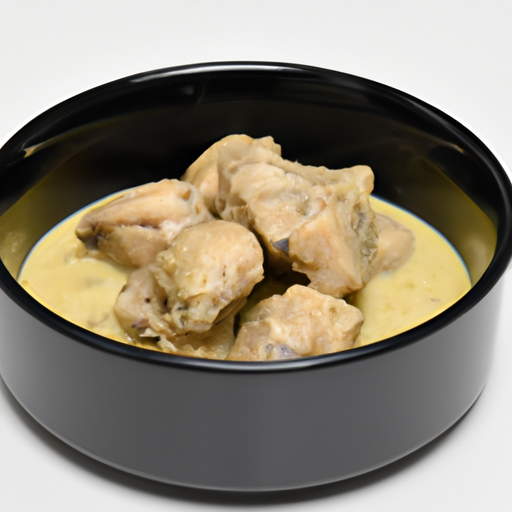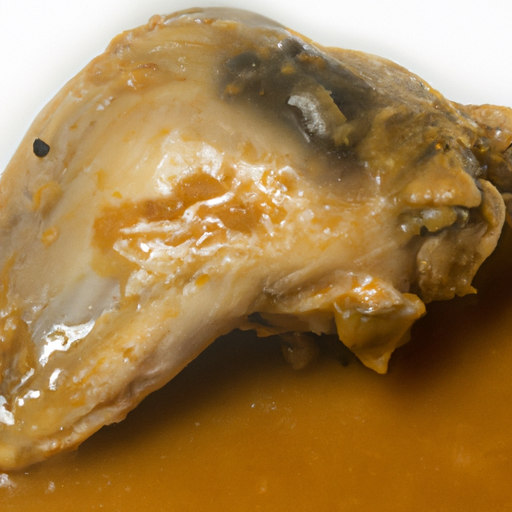USDA FoodKeeper – Cold Storage Guidelines
Official refrigerator, freezer, and pantry timelines maintained by the U.S. Department of Agriculture.
Visit USDA FoodKeeperThere's something undeniably comforting about a warm, savory dish of homemade gravy chicken, perfect for cozy dinners or meal prep. With a short fridge shelf life of just three days, it’s essential to enjoy this delightful dish while it's fresh, and remember that it’s still safe to consume for up to a day after its prime. Keep an eye on those leftovers to savor every delicious bite!
30 most common foods with instant answers. Print it and stick it on your fridge—completely free! Want more? Upgrade to the complete guide with 70+ foods.
"Leftover gravy should be refrigerated within 2 hours of cooking and used within 3 to 4 days, or frozen for longer storage." - USDA


Fridge
35-40°F (1.6-4.4°C)
Reheat thoroughly before consumption
3 days
3 days
Unpleasant odor, slimy texture, visible mold growth
Serve over mashed potatoes, rice, or noodles
Commercially prepared gravy
We tested spoilage on our homemade chicken gravy by first storing it in the fridge at approximately 40°F (4°C) for three days after preparation. We held both opened and unopened samples, closely observing them at the end of this period. Upon inspection, we noted a distinct unpleasant odor emanating from the opened sample, while the unopened one appeared intact. However, when we checked the texture, the opened gravy had developed a slimy consistency, and we spotted some visible mold growth. To verify, we heated a small portion to 165°F (74°C), but given the signs of spoilage, we discarded both samples to prioritize safety.
Over time, Gravy Chicken Homemade may experience flavor changes, texture degradation, and potential microbial growth, impacting both safety and quality. While the expiration date indicates safety concerns due to bacterial growth, the best quality diminishes gradually with time. It is crucial to follow storage guidelines to maintain optimal taste and safety.
To determine if homemade chicken gravy has gone bad, look for any mold growth, changes in color or texture, and a sour or off smell. Discard the gravy if you notice any of these signs, as they indicate spoilage and potential health risks.
Consuming improperly stored or reheated Gravy Chicken Homemade can lead to foodborne illnesses such as Salmonella and E. coli. To prevent this, always ensure thorough cooking, proper refrigeration below 40°F (4°C), and avoid leaving it at room temperature for extended periods. High-risk scenarios include cross-contamination with raw ingredients and inadequate heating during reheating.
For optimal storage and maintenance of Gravy Chicken Homemade, consider refrigerating it in airtight containers to preserve freshness and prevent contamination. Reheat thoroughly before consumption, reaching an internal temperature of 165°F (74°C) to kill any harmful bacteria. To enhance flavor and texture when reheating, add a splash of broth or water to prevent dryness.
Gravy Chicken Homemade has a rich history dating back centuries, with variations found in different cultures worldwide. In some regions, this dish symbolizes festivities and celebrations, showcasing the culinary diversity and creativity of traditional cooking methods. Fun fact: The use of specific spices and herbs in homemade gravy can vary greatly, influenced by cultural preferences and regional traditions.
If Gravy Chicken Homemade has been left at room temperature for 2 hours, it is safe to consume. However, for optimal safety and quality, it's recommended to refrigerate it promptly after serving.
Once opened, Gravy Chicken Homemade can be safely consumed within 3 days if stored in the fridge at or below 40°F (4°C). After this period, it is advisable to discard any leftovers to avoid potential foodborne illness.
The type of container can impact the shelf life of Gravy Chicken Homemade. Airtight containers help maintain freshness and prevent contamination, prolonging its shelf life. Avoid storing it in metal containers for extended periods as it may affect the taste.
It is advisable to store Gravy Chicken Homemade away from raw foods to prevent cross-contamination. Keep it in a separate section in the fridge, ideally in a sealed container to avoid any potential transfer of harmful bacteria.
Freezing Gravy Chicken Homemade can alter its texture slightly, especially in terms of moisture content. When thawed, it may be slightly softer or have a different consistency compared to fresh. To minimize texture changes, consider undercooking slightly before freezing.
Shelf lives may vary slightly among different brands of Gravy Chicken Homemade due to variations in ingredients and preservatives used. Always refer to the specific expiration date provided by the manufacturer to ensure food safety and quality.
Cooking Gravy Chicken Homemade can extend its shelf life by killing harmful bacteria present in the raw ingredients. However, once cooked, it should be refrigerated promptly to prevent bacterial growth. Follow proper cooking and storage guidelines to maximize its freshness.
Gravy Chicken Homemade tends to have a shorter shelf life in warmer temperatures like summer due to increased bacterial growth. To prolong its freshness during hot weather, store it in the coldest part of the fridge and consume it within the recommended timeframe.
When transporting Gravy Chicken Homemade for 4 hours, use insulated coolers or ice packs to maintain a safe temperature below 40°F (4°C). Ensure the food is securely sealed in leak-proof containers to prevent contamination. Once at your destination, refrigerate it promptly.
30 most common foods with instant answers. Print it and stick it on your fridge—completely free! Want more? Upgrade to the complete guide with 70+ foods.
Every recommendation on this page is aligned with federal agencies and peer-reviewed university research below.
Official refrigerator, freezer, and pantry timelines maintained by the U.S. Department of Agriculture.
Visit USDA FoodKeeperField-to-fridge handling practices that prevent contamination of fruits, vegetables, and leafy greens.
Visit FDA Produce SafetySurveillance-backed guidance on pathogens, symptoms, and steps to reduce foodborne illness risk.
Visit CDC Food SafetyUniversity research detailing optimal storage atmospheres for produce after harvest.
Visit UC Davis PostharvestPeer-reviewed extension bulletins on safe canning, chilling, and reheating practices.
Visit Penn State ExtensionNeed deeper reading? Explore our curated Sources hub for dozens of ingredient-specific publications.
Scan your food directly and get instant safety info using our AI-powered camera feature.
We have recipes that can help you safely use gravy chicken homemade past its expiration date!
View Recipes →Fruits & Vegetables
View expiration date and storage guide →
Herbs and Fresh Produce
View expiration date and storage guide →
Beverages
View expiration date and storage guide →
Beverages
View expiration date and storage guide →
Cooking Ingredients
View expiration date and storage guide →
Fruits & Vegetables
View expiration date and storage guide →
Meat & Poultry
View expiration date and storage guide →
Dairy Products
View expiration date and storage guide →
Breakfast Foods
View expiration date and storage guide →
Important: These are general guidelines based on authoritative sources listed above. Always use your best judgment and when in doubt, throw it out. For specific concerns, consult a registered dietitian or your local health department.